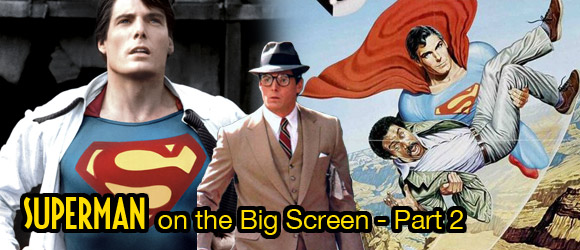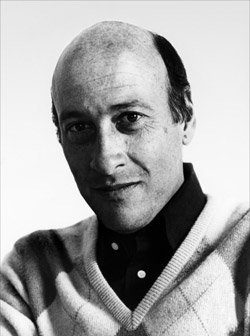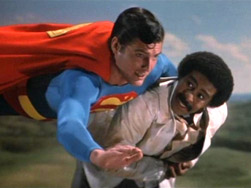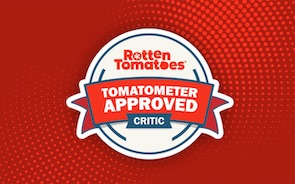
To celebrate the bravery of a new creative team, and a new actor, in the upcoming Man of Steel, we will explore all of the Superman films leading up to its release, and see if Henry Cavill can become Kalel of Krypton for a new generation.
THE LESTER ERA
Richard Lester was a regular and popular contributor to the Salkinds in the years preceding their foray into the world of Superman. With tensions beyond repair between Richard Donner and the Salkinds, and made public by both the director and the cast and crew, it was decided by the producers to let Donner go and let Lester take over.
Lester’s mandate, by all accounts during his tenure on the film, was clear: he was to shoot the footage necessary to complete the movie and meet the required amount of footage for him to legally be recognized as the film’s author. Since Donner had completed the lion’s share of Superman 2 already before stopping production in 1977, the new Lester version, to begin shooting in June 1979, would be heavily rewritten.
Despite being asked to return, Donner’s collaborator Tom Mankiewicz refused the offer out of loyalty to Donner. Gene Hackman chose to do the same thing, and refused to return for reshoots. The cast, demoralized by Donner’s removal, returned to film a very different version than they’d been working on.
 Lester was a director the Salkind’s preferred; he was an economical director, who would work rapidly and stick to schedule. The downside, according to some surviving cast members, was that the family atmosphere of Donner’s production disappeared, and the freedom to explore possibilities under their new leader were non-existent. It was a ‘stand there, and say this’ production line venture, apparently.
Lester was a director the Salkind’s preferred; he was an economical director, who would work rapidly and stick to schedule. The downside, according to some surviving cast members, was that the family atmosphere of Donner’s production disappeared, and the freedom to explore possibilities under their new leader were non-existent. It was a ‘stand there, and say this’ production line venture, apparently.
In further cost cutting measures, the Salkind’s decided to not use Marlon Brando’s scenes in the sequel, and a stand in was used and rewrites made to adapt to Hackman’s absence from the reshoot, resulting in the reduced presence of Lex Luthor. Ken Thorne would score this time, but John Williams has expressed no misgivings about returning, citing simple scheduling conflicts with his inability to continue. Thorne would borrow heavily from Williams throughout the picture regardless, adding thematic cohesion to both films. Editor Stuart Baird also walked away, and John Victor-Smith took over.
With such heavy focus on the business side of things, one would have assumed this cynical approach to filmmaking would provide a calamitous final product. But in fact, Superman 2 is considered by many, including Christopher Reeve, to be the best of the series.
In the follow on to Donner’s immortal original, Superman inadvertently releases three Kryptonian criminals from the Phantom Zone when he rescues Lois and sends a bomb filled elevator into space. When Lois finds out Superman’s real identity, and the Kryptonian decides to pursue a relationship with her, at the cost of his powers, the three criminals, led by General Zod (The sublime Terrance Stamp) begin an assault on the Earth that threatens everyone. Upon learning of his father’s enemies, Kalel of Krypton is faced with sacrificing his own happiness to save the world from a fate they can’t escape.
It’s a rousing story, the most emotional of the four Reeve entries. It takes the three act principle and sends everything to hell in hand-basket for our hero for the second act. The threat this time is palpable, mortal, with three adversaries matching Superman’s abilities and outmatching him in number and experience. There is depth in all the central characters, carefully built upon from the previous film, and exceptionally expanded on here. Donner is responsible for us falling in love with these characters, and it is more than arguable his print is all over this film as well. But Lester actually does a fine job in stitching a new narrative together fairly seamlessly. This is not to say there aren’t some inconsistencies, with Lester’s penchant for slapstick beginning to creep into the movie and foreshadowing the pain to come in the next entry, but Superman 2 proved to be a monster hit and a critical smash.
Superman 2 grossed 108 million dollars after its’ unusual staggered worldwide release, far less than its predecessor but still enough to keep its’ producers happy. The reception cemented a franchise for the Salkinds: Superman, like James Bond before him, would return the credits announced.
Lester would be given free reign for the next Superman outing. In an odd move, after famed comedian Richard Pryor expressed his desire to participate in a future Superman film on a late night talk show, the producers decided to run with it. The Newmans were on writing duties again, and the next Superman film would be a far more light-hearted affair in the vein of the script Donner had discarded on the first two.
 This film would almost put Superman in the background, with the central character really being Pryor’s August Gorman—a hapless computer savant who gets tangled up with a wealthy and greedy businessman (Robert Vaughn) with world domination on his mind. Superman is a reactive character in this one, instead of being the one we see the world through. We see him through secondary characters’ eyes and it diminishes both his presence on screen and his relatable qualities earned so well in the previous movies.
This film would almost put Superman in the background, with the central character really being Pryor’s August Gorman—a hapless computer savant who gets tangled up with a wealthy and greedy businessman (Robert Vaughn) with world domination on his mind. Superman is a reactive character in this one, instead of being the one we see the world through. We see him through secondary characters’ eyes and it diminishes both his presence on screen and his relatable qualities earned so well in the previous movies.
From the first frames of Superman 3, with its Buster Keaton slapstick opening, this is a very different world than the one established before. It’s jarring. Lester’s love of the absurd—and the script’s over-reliance on Pryor—completely undermine any sense of tension or conflict throughout the film. The one highly praised element, which is the corruption of Superman (and was played with relish and promise by Reeve), is lost in an unending ham-fisted blurting of disjointed set pieces for Pryor to riff or other characters to banter.
The sense of majesty, of Donner’s precious ‘verisimilitude’, is completely absent. We have the same players, by and large (although Margot Kidder is relegated to two bookend scenes, replaced by Annette O’Toole’s Lana Lang), but they cannot rise above the script’s inadequacies or the new tone to come anywhere near the quality of its predecessors.
Put in modern terms, Superman 3 is almost a reboot—the Batman and Robin of the 80s (although this reviewer believes it beats that crime against humanity hands down). The cast was selected for a very different approach by Donner, and with Lester’s, remiss of any Donner DNA at all, they floundered. This was never going to work. This is the film that Donner supporters argue proves it was his approach and his input that made the first two so beloved. This was the film where the Salkinds’ choice of business over art finally saw them undone.
This is not to say that Superman 3 was a financial flop; it made nearly 130 million worldwide. But critics mauled it, and even the most devoted of Superman fans were vocal in their distaste for the campy revisionism of their hero’s world.
Superman 3 is now, as it was then, seen as a turn for the worse in the franchise. By its completion, even its producers were fatigued with the franchise and moved on to do the even more abysmal Supergirl.
Richard Lester’s name is on the film that is considered the best in the series, but his only solo effort, the film that followed it, seems more indicative of his creative control. Under his direction, the Man of Steel lost his resonance and power. Superman became unrelatable, a character seen through the eyes of turgid over the top characters we had no hope of bonding with or caring for. Superman 3 was the beginning of the end for the Reeve films.
Amazingly, there would be something worse ahead…
JOIN US NEXT TIME FOR SUPERMAN ON THE BIG SCREEN PART 3: THE MISFIRES…
Check out part 1 of the Superman series - Superman on the Big Screen Part 1: The Donner Era
Check out part 3 of the Superman series - Superman on the Big Screen Part 3: The Misfires
Check out part 4 of the Superman series - Superman on the Big Screen Part 4: A Fresh Start



























